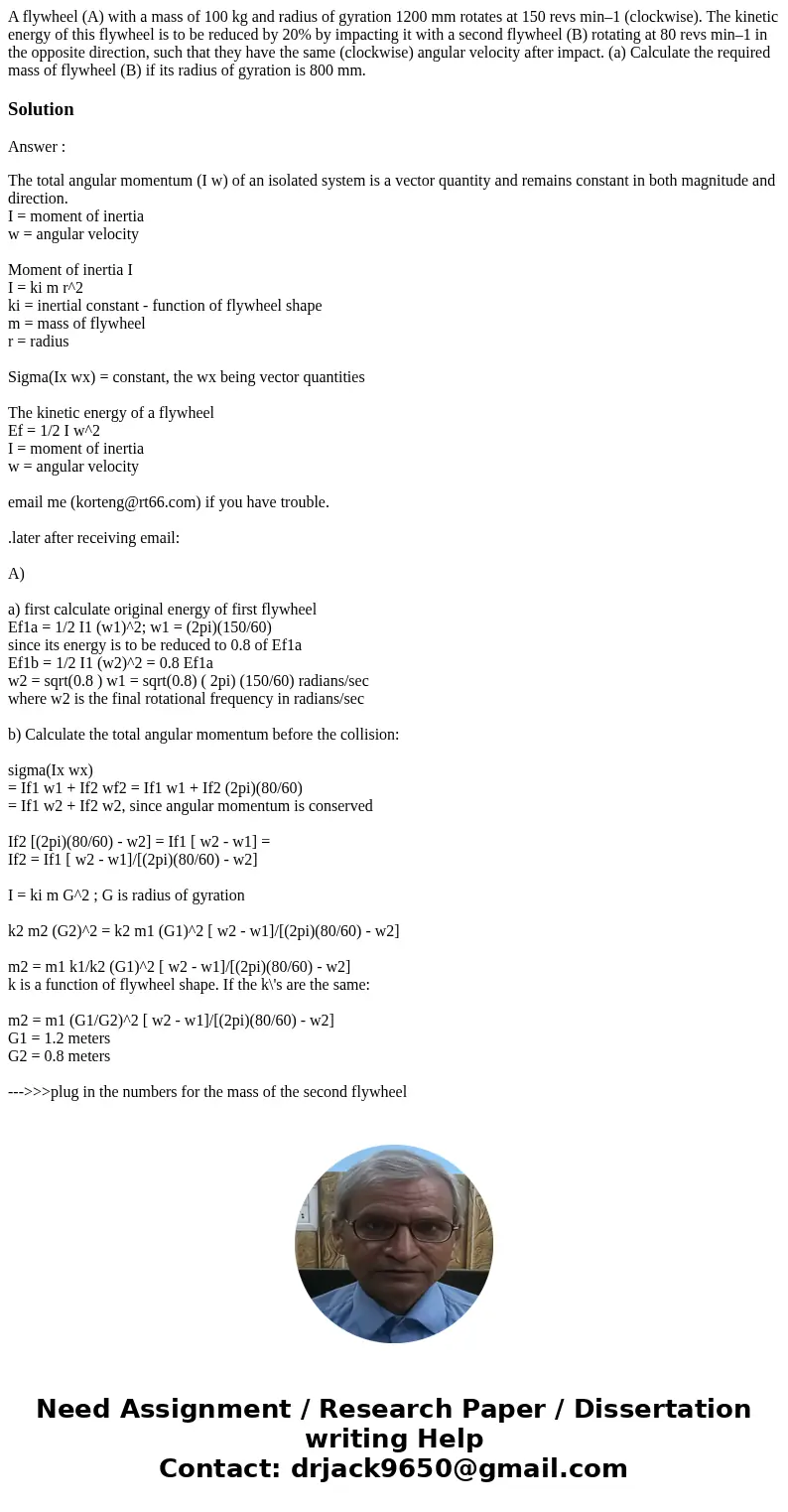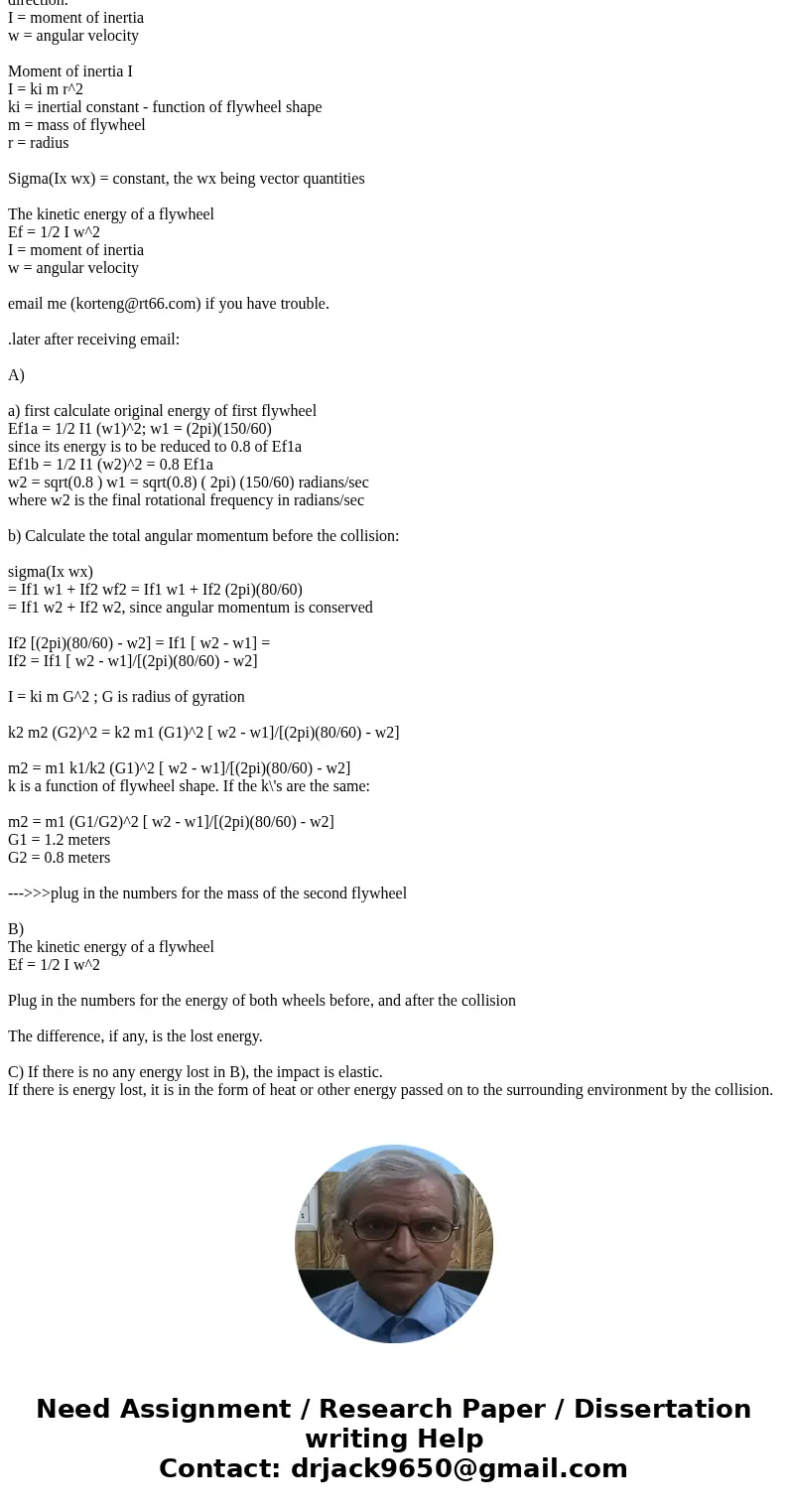A flywheel A with a mass of 100 kg and radius of gyration 12
A flywheel (A) with a mass of 100 kg and radius of gyration 1200 mm rotates at 150 revs min–1 (clockwise). The kinetic energy of this flywheel is to be reduced by 20% by impacting it with a second flywheel (B) rotating at 80 revs min–1 in the opposite direction, such that they have the same (clockwise) angular velocity after impact. (a) Calculate the required mass of flywheel (B) if its radius of gyration is 800 mm.
Solution
Answer :
The total angular momentum (I w) of an isolated system is a vector quantity and remains constant in both magnitude and direction.
I = moment of inertia
w = angular velocity
Moment of inertia I
I = ki m r^2
ki = inertial constant - function of flywheel shape
m = mass of flywheel
r = radius
Sigma(Ix wx) = constant, the wx being vector quantities
The kinetic energy of a flywheel
Ef = 1/2 I w^2
I = moment of inertia
w = angular velocity
email me (korteng@rt66.com) if you have trouble.
.later after receiving email:
A)
a) first calculate original energy of first flywheel
Ef1a = 1/2 I1 (w1)^2; w1 = (2pi)(150/60)
since its energy is to be reduced to 0.8 of Ef1a
Ef1b = 1/2 I1 (w2)^2 = 0.8 Ef1a
w2 = sqrt(0.8 ) w1 = sqrt(0.8) ( 2pi) (150/60) radians/sec
where w2 is the final rotational frequency in radians/sec
b) Calculate the total angular momentum before the collision:
sigma(Ix wx)
= If1 w1 + If2 wf2 = If1 w1 + If2 (2pi)(80/60)
= If1 w2 + If2 w2, since angular momentum is conserved
If2 [(2pi)(80/60) - w2] = If1 [ w2 - w1] =
If2 = If1 [ w2 - w1]/[(2pi)(80/60) - w2]
I = ki m G^2 ; G is radius of gyration
k2 m2 (G2)^2 = k2 m1 (G1)^2 [ w2 - w1]/[(2pi)(80/60) - w2]
m2 = m1 k1/k2 (G1)^2 [ w2 - w1]/[(2pi)(80/60) - w2]
k is a function of flywheel shape. If the k\'s are the same:
m2 = m1 (G1/G2)^2 [ w2 - w1]/[(2pi)(80/60) - w2]
G1 = 1.2 meters
G2 = 0.8 meters
--->>>plug in the numbers for the mass of the second flywheel
B)
The kinetic energy of a flywheel
Ef = 1/2 I w^2
Plug in the numbers for the energy of both wheels before, and after the collision
The difference, if any, is the lost energy.
C) If there is no any energy lost in B), the impact is elastic.
If there is energy lost, it is in the form of heat or other energy passed on to the surrounding environment by the collision.


 Homework Sourse
Homework Sourse